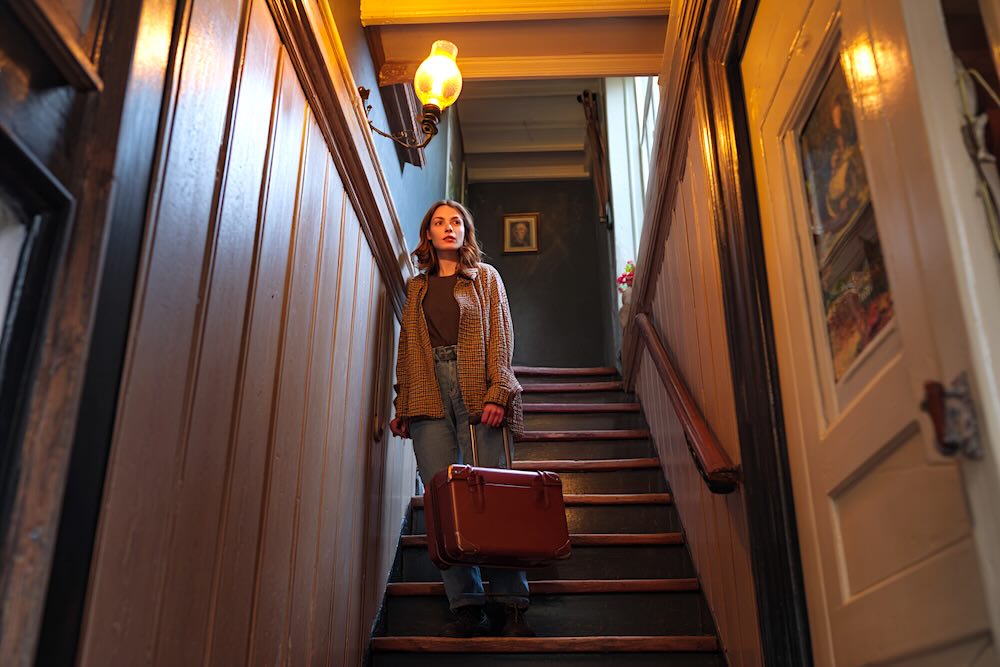Amsterdam’s Steep Stairs Explained: The Surprising History Behind a Dutch Architectural Quirk
Posted on: enero 1, 2025

Why Are Stairs in Amsterdam So Steep? The Fascinating Story Behind the City’s Iconic Architecture
Steep stairs in Amsterdam shock most visitors—why are they so vertical, narrow, and tricky? Here’s what no one tells you.
Historical Architecture and Narrow Houses

Amsterdam’s iconic canal houses were mostly built during the Dutch Golden Age in the 17th century. Back then, city land was expensive and tightly packed, especially along the canals.
To make the most of limited space, builders designed houses that were very narrow but stretched several stories high. These homes had small footprints, but they made up for it with height and depth.
Inside these narrow buildings, every bit of space counted. Staircases had to be steep to fit without wasting floor area. That’s why many of these homes feel more like vertical tunnels than spacious residences.
Why it mattered:
- Land was limited in central Amsterdam
- Builders had to fit homes into small plots
- Narrow homes meant less room for wide, gradual staircases
This design choice shaped not only how homes looked outside, but how people moved inside them.
Many of the historic buildings in the Barrio Rojo de Ámsterdam feature the same steep staircases that make Amsterdam’s architecture so unique. As you explore this famous area, you’ll notice the tall, narrow canal houses that once housed merchants, workers, and families — all built with space-saving stairs to fit the tight urban layout.
Understanding why these stairs are so steep adds a fascinating layer to your visit and helps you appreciate the district’s rich architectural history even more.
While exploring the steep staircases in Amsterdam’s vintage canal homes, you might imagine how challenging it must have been to keep these vertical structures safe and usable today. Many property owners in the Netherlands turn to expert solutions such as a professional staircase renovation that modernises worn stairs, improves antislip safety features, and restores historic character — a helpful strategy for preserving your stairwell’s charm without compromising on usability.
Taxation on House Frontage

A major reason Amsterdam homes were built narrow was a city tax law. In the 1600s, homeowners were taxed based on how wide their house was at the front—the part facing the street or canal.
The wider the house, the more tax you paid. To save money, people built tall, deep, and narrow homes. This is why many Amsterdam houses are skinny but several floors tall.
With less width inside, staircases had to go straight up in a steep angle to reach each floor. That’s how the tax system led to the steep stairs we still see today.
Quick look: House Width vs. Tax
| House Width | Yearly Tax (Historic) |
|---|---|
| 5 meters | High |
| 2 meters | Low |
Result: Steep stairs helped maximize space without increasing taxable width.
Vertical Space Optimization
Because houses were narrow, homeowners had to think vertically. Every square meter mattered. A traditional staircase with a slow, gentle rise takes up too much horizontal space.
Instead, Dutch builders used steep stairs. These stairs saved space by going up sharply in a small footprint. This let them add more rooms and usable space on each floor.
Some stairs were almost like ladders, with short, narrow steps. This helped preserve floor area but made climbing them tricky—especially while carrying things.
Why steep stairs worked:
- Fit into tight spaces
- Took up less room than standard stairs
- Allowed taller homes with more floors
Steep stairs were a smart fix for a small-space problem.
Use of Pulley Systems and Hoisting Beams
Steep stairs made moving large items inside the house difficult. Sofas, beds, and even chairs couldn’t fit around tight corners.
To solve this, builders added a hoisting beam to the top of the house. This wooden beam sticks out above the top window. Using a pulley, people could lift furniture from the street into upper floors.
These beams are still visible today across Amsterdam. It’s common to see furniture being lifted outside because the stairs are too steep and narrow to use.
Why hoisting beams were used:
- Stairs too tight for big furniture
- Faster to lift from the outside
- Protected walls and doorways from damage
This simple design helped solve a big problem—and it’s still in use centuries later.
Cultural and Aesthetic Legacy
Steep staircases have become a defining feature of Amsterdam homes. They reflect the city’s unique history, design choices, and space-saving solutions.
For locals, climbing steep stairs is just part of daily life. For visitors, it’s a surprise—and often a challenge!
These staircases are now seen as charming and historic. They connect us to the past and show how smart design shaped city living.
How steep stairs add character:
- Tell a story of old Amsterdam
- Reflect practical design solutions
- Make houses visually unique
Despite the inconvenience, many homeowners keep their original stairs because of their historic value.
Safety and Accessibility Challenges
While steep stairs are charming, they can be dangerous. The narrow steps and sharp angle make them hard to climb—especially for kids, older adults, or people with mobility issues.
Many modern building codes would not allow these designs today. But since these are historic buildings, the original stairs are often left unchanged.
Visitors staying in old canal houses should take care. Always use handrails and avoid carrying heavy luggage up steep staircases.
Safety tips:
- Walk slowly and carefully
- Use the handrail
- Don’t carry bulky items alone
Some homes have added alternative stair solutions or lifts, but many remain unchanged due to heritage protection.
Comparison with Other European Cities
Amsterdam’s steep stairs are unusual—even for Europe. In many other historic cities, homes were built wider, so staircases could be broader and more gradual.
For example, in Paris or Vienna, homes often have wider staircases due to different land costs and building styles. Amsterdam’s land tax and narrow canal plots made steep stairs a necessity.
Quick comparison:
| City | Stair Style | Reason |
| Amsterdam | Steep, narrow | Narrow houses, tax on width |
| Paris | Gradual, wider | Wider buildings |
| London | Mix of both | Varies by district |
This unique feature sets Amsterdam apart and gives its homes a distinct character not found elsewhere.
Visiting the historic homes with steep stairs also offers a perfect chance to explore the Amsterdam Red Light District. As you wander the narrow canal‑side alleys and towering narrow houses, consider all the hidden gems listed in our guide to the 15 x must‑see in Amsterdam Red Light District – from iconic architecture to lively cafés and quirky museums.
People Also Ask
1. Why are stairs in Amsterdam so steep?
Stairs in Amsterdam are steep because houses were built tall and narrow due to space limits and a tax on house width. Steep stairs saved space inside these narrow homes.
2. Was there a tax that made Amsterdam stairs steep?
Yes. In the 17th century, homeowners were taxed based on the width of their house. This led to narrow homes with steep stairs to fit vertical space.
3. Are all Dutch stairs this steep or just in Amsterdam?
Steep stairs are common across the Netherlands, especially in older cities like Amsterdam, where space was limited. However, Amsterdam’s historic canal houses are known for having the steepest ones.
4. Is it safe to use steep stairs in Amsterdam houses?
Most are safe but can be tricky, especially for children, seniors, or visitors with luggage. Use handrails and take your time going up or down.
5. Why do Amsterdam houses have hooks or beams on the roof?
These are hoisting beams used to lift furniture into the house through the windows, since the stairs are too narrow and steep for large items.
6. Can you still find these steep stairs in modern Amsterdam homes?
Newer buildings follow modern safety codes and usually have standard stairs. But many old canal houses still have their original steep staircases.
Exploring the steep stairs in Amsterdam’s historic canal homes naturally leads us to the heart of the city’s oldest district — where the Oude Kerk stands. Nestled amidst towering narrow houses and winding stairwells in the Amsterdam Red Light District, this medieval church offers a vivid backdrop for understanding how limited space influenced both interiors and exteriors. From its hoisting beams above canal‑front facades to the tall narrow staircases inside, the architectural story intersecting the church grounds and its neighbouring homes is a living example of Amsterdam’s design logic.




